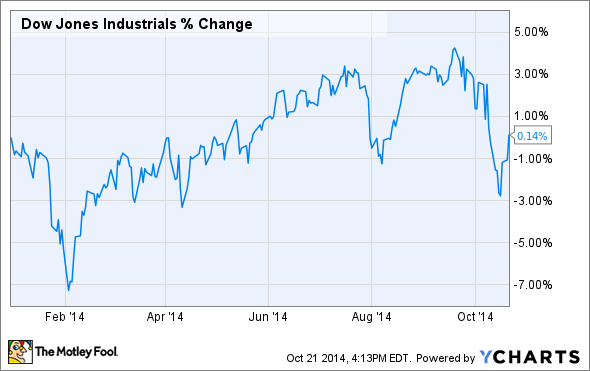How Now Dow What Moves The DJIA
Post on: 16 Март, 2015 No Comment

The Dow is up, the Dow is down. the daily news just wouldn’t be complete without a report about the open and close of this market index. But although you’ve certainly heard reports about the Dow Jones Industrial Average (DJIA) being up or down a certain number of points, do you know what these points represent? Read on to find out how the Dow works and what changes mean for investors and the market.
The Dow and the Market
In the United States there are three major indicators, or indexes. of market movements: the Nasdaq Composite, Dow Jones Industrial Average (DJIA or the Dow) and the Standard & Poor’s 500. As a collective, these market indexes are referred to as the Security Market Indicator Series (SMIS). They provide a basic signal of how specific markets perform during the day. Of these three, the DJIA is the most widely publicized and discussed. Fortunately for us, it is also the easiest to calculate and explain.
History of the DJIA
Dow Jones & Co. was founded in 1882 by Charles Dow, Edward Jones and Charles Bergstresser. Despite popular belief, the first averages were not published in the Wall Street Journal but in its precursor, called the Customer’s Afternoon Letter. The first averages didn’t even include any industrial stocks. The focus was on the growth stocks of the time, mainly transportation companies. This means that the first Dow Jones Index included nine railroad stocks, a steamship line and a communications company. This average eventually evolved into the transportation Average. It wasn’t until May 26, 1896, that Dow split transportation and industrials into two different averages, creating what we know now as the Dow Jones Industrial Average.
Charles Dow had the vision to create a benchmark that would project general market conditions and therefore help investors bewildered by fractional dollar changes. It was a revolutionary idea at the time, but its implementation was simple. The averages were, well, plain old averages. To calculate the first average, Dow added up the stock prices and divided by 11 — the number of stocks included in the index.
Today, the DJIA is a benchmark that tracks American stocks that are considered to be the leaders of the economy and are on the Nasdaq and NYSE. The DJIA covers 30 large-cap companies, which are subjectively picked by the editors of the Wall Street Journal. Over the years, companies in the index have been changed to ensure the index stays current in its measure of the U.S. economy. In fact, of the initial companies included in the average, only General Electric remains as part of the modern-day average.
DJIA Complications
As you might have guessed, calculating the DJIA today isn’t as simple as adding up the stocks and dividing by 30. Dow lived in times when stock splits and stock dividends weren’t commonplace, so he didn’t foresee how these corporate actions would affect the average .
For example, if a company trading at $100 implements a 2-for-1 split, the number of its shares doubles, and the price of each share becomes $50. This change in price brings down the average even though there is no fundamental change in the stock. To absorb the effects of price changes from splits, those calculating the DJIA developed the Dow divisor. a number adjusted to account for events like splits that is used as the divisor in the calculation of the average.














